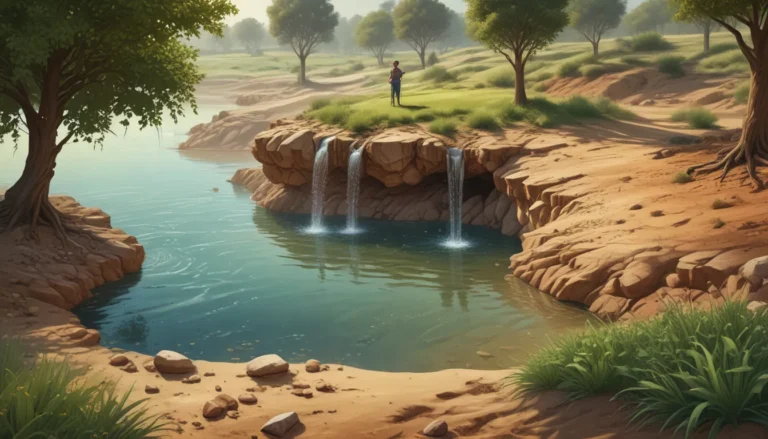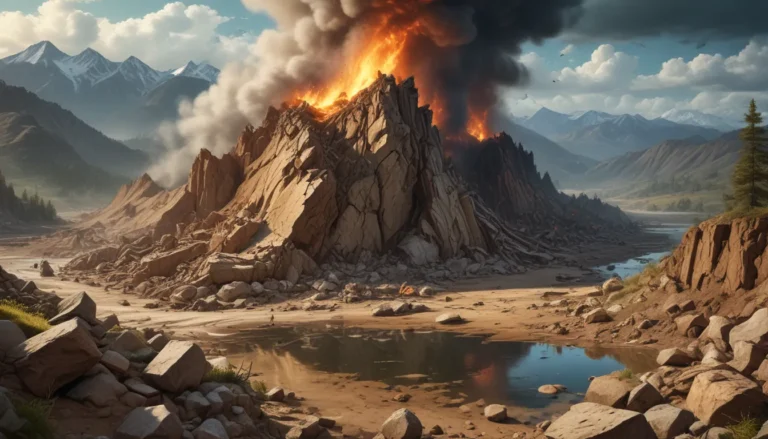A Note About Images: The images used in our articles are for illustration purposes only and may not exactly match the content. They are meant to engage readers, but the text should be relied upon for accurate information.
Have you ever found yourself experiencing drastically different weather conditions within the same city or noticed unexpected changes in temperature? Chances are, you were encountering the fascinating phenomenon of a microclimate. These localized weather systems bring about unique conditions in small areas, influencing ecosystems, agriculture, and even human comfort. In this article, we will embark on a journey through the hidden realms of microclimates, unveiling nine intriguing facts about these small-scale climatic variations.
Understanding Microclimates: A Closer Look
Microclimates are like personalized weather zones, creating distinct environments within larger geographical areas. These localized climates can vary significantly from the surrounding region, shaping unique weather patterns, temperature ranges, and precipitation levels. Experts study microclimates to comprehend how they affect ecosystems, agriculture, and human activities. Changes in these small-scale weather systems can have significant impacts on our environment and daily lives.
Exploring the Diversity of Microclimates
-
Variability in Small Geographic Areas: Microclimates are localized climate conditions that can differ greatly from the surrounding area. Factors such as topography, vegetation, and proximity to water bodies play a crucial role in creating microclimates with unique temperature, humidity, and precipitation patterns.
-
Urban Microclimates: Cities often exhibit their own microclimates, known as the “urban heat island” effect. Tall buildings, concrete structures, and asphalt surfaces absorb and retain heat, leading to higher temperatures within urban areas compared to rural surroundings.
-
Ecosystem Support: The diversity of microclimates enables the existence of various plant and animal species within a relatively small geographical area. Certain plants may flourish in specific microclimates, while others may struggle to survive.
-
Coastal Microclimates: Proximity to the ocean can give rise to coastal microclimates characterized by cooler temperatures, higher humidity, and increased fog. These unique weather patterns can profoundly impact local agriculture and biodiversity.
Impacts and Applications of Microclimates
-
Agricultural Practices: Farmers leverage microclimates to grow specific crops that are well-suited to local conditions. Vineyards, for instance, thrive in microclimates with specific temperature and soil characteristics.
-
Human Comfort and Well-being: Understanding microclimates is essential for urban planning and designing buildings equipped with appropriate heating, ventilation, and air conditioning systems. Awareness of local microclimate conditions can lead to the creation of more comfortable and sustainable living environments.
-
Economic Significance: Favorable microclimates can attract tourists and support industries such as agriculture, winemaking, and outdoor recreation. Conversely, certain microclimates may present challenges for certain economic activities.
Dynamics of Microclimates
-
Temporal Changes: Natural and human-induced factors can cause shifts in microclimate conditions. Climate change, urbanization, and deforestation are among the factors that can alter microclimates, impacting local ecosystems.
-
Scientific Study: Climatologists and ecologists delve into the intricacies of microclimates to better understand the interplay between atmospheric conditions, vegetation, and human activities. This knowledge aids in predicting weather patterns and assessing the effects of climate change.
Unveiling the Complexity of Microclimates
In conclusion, microclimates are captivating phenomena that exert a significant influence on the weather patterns of various regions. These small-scale climatic variations create unique environments that affect everything from temperature and precipitation to flora and fauna. Understanding microclimates is crucial for fields such as agriculture, urban planning, and tourism, offering valuable insights into the complexities of Earth’s climate system.
Frequently Asked Questions
What are microclimates?
Microclimates refer to small-scale variations in climate within a larger region, influenced by factors such as topography, vegetation, and human activities.
How do microclimates form?
Microclimates form due to localized influences such as elevation, proximity to water bodies, or the presence of urban areas, interacting with atmospheric conditions to create distinct climate variations.
Can microclimates occur within a city?
Yes, urban areas can have their own microclimates due to unique characteristics of buildings, pavement, and other factors that absorb and retain heat differently compared to natural surroundings.
How can microclimates impact plant and animal life?
Microclimates can significantly impact plant and animal life, with certain species thriving or struggling in specific microclimates due to variances in temperature, precipitation, and other environmental factors.
How do microclimates affect agriculture?
Understanding microclimates is crucial for agriculture, as farmers can utilize this knowledge to determine the best crops to grow in specific areas, optimize irrigation practices, and protect plants from extreme weather events.
Can microclimates change over time?
Yes, microclimates can change over time due to factors such as urbanization, deforestation, and climate change, leading to shifts in temperature, precipitation, and overall weather patterns within microclimatic zones.
How are microclimates studied?
Microclimates can be studied through the collection of weather data, including temperature, humidity, wind patterns, and precipitation measurements. This data helps researchers understand the specific characteristics and dynamics of microclimatic regions.
Was this page helpful?
Our dedication to delivering trustworthy and engaging content drives us to provide valuable insights into various phenomena, including microclimates. Each fact on our site is contributed by real users like you, ensuring a wealth of diverse information. We strive for accuracy and reliability, with our dedicated editors meticulously reviewing each submission. Trust in our commitment to quality and authenticity as you explore and learn with us.
By unraveling the wonders of microclimates, we gain a deeper appreciation for the intricate dynamics that shape our environment. So next time you encounter a microclimate, take a moment to marvel at the fascinating phenomenon unfolding around you.






